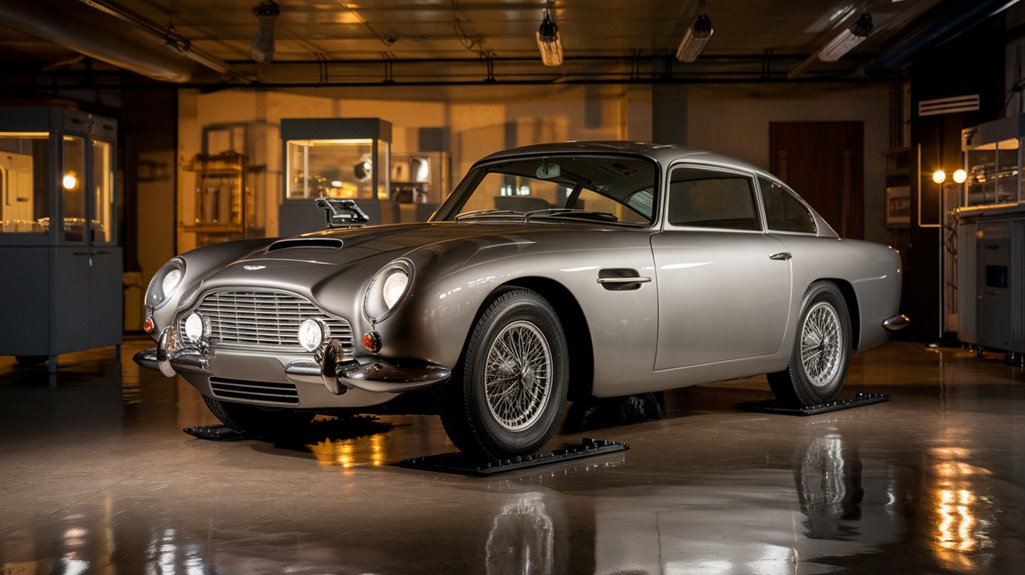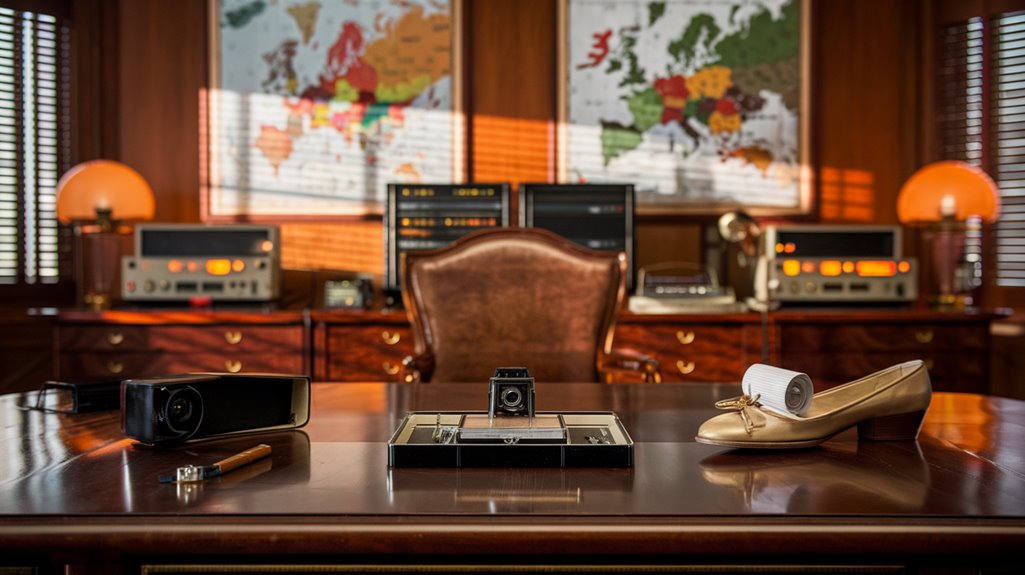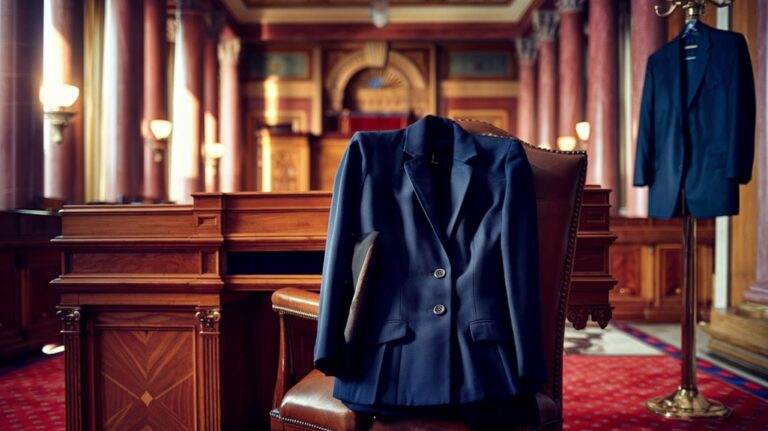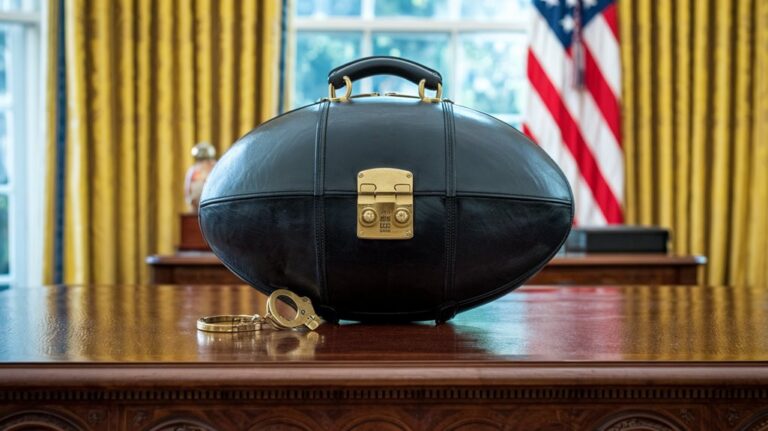James Bond Gadgets Come to Life in the Cold War
Just as you're watching the latest James Bond film, you might notice that Q's outlandish gadgets aren't as far-fetched as they seem. During the Cold War, both Soviet and Western intelligence agencies turned Hollywood's wildest spy fantasies into working prototypes. From lipstick guns to poison-tipped umbrellas, these real-world devices blurred the line between fiction and reality. What's even more intriguing is how many of these classified innovations went on to shape modern surveillance technology.
The Reality Behind Bond's Spy Toys
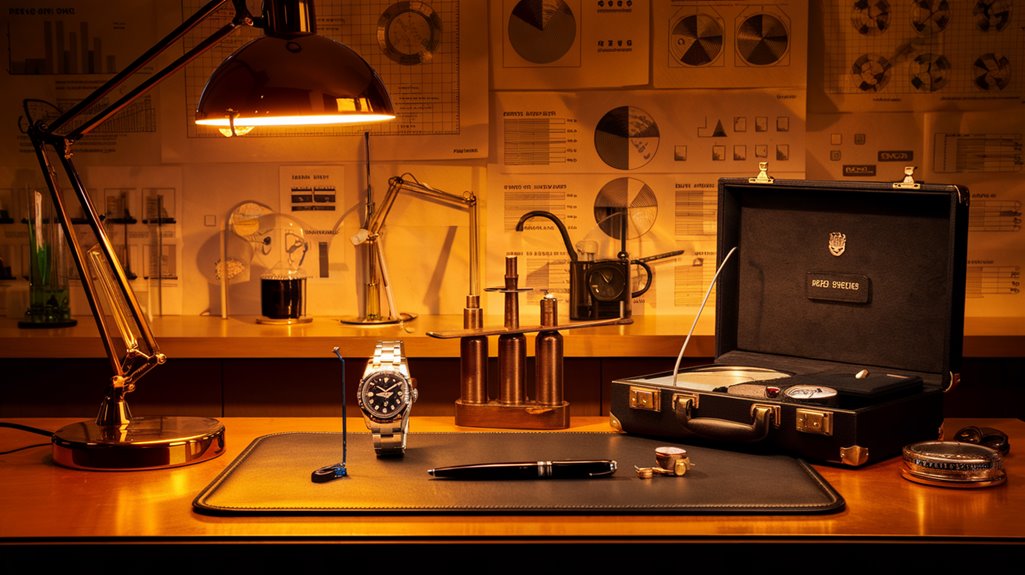
While James Bond's gadgets may seem purely fictional, many were inspired by actual Cold War espionage tools. You'll find surprising spy realism in devices like the Soviet umbrella gun and KGB's lipstick pistol, which mirror Bond's creative arsenal of weaponry.
The gadget practicality of real Cold War spy tools influenced the film franchise, as both the CIA and KGB developed ingenious ways to conceal their surveillance equipment. The F21 Ammer camera became one of the most effective covert photography tools of the era. Bond's gear has consistently evolved to reflect cutting-edge technology of each decade, maintaining authenticity.
Take the Great Seal bug, for instance – a listening device hidden within a wooden seal that demonstrated the same cleverness you'd expect from Q Branch.
Even Bond's camera innovations had real-world counterparts, like the pigeon-mounted cameras used for aerial reconnaissance.
These authentic spy gadgets now rest in museums, proving that truth can be just as fascinating as fiction.
From Fiction to Field Operations
The relationship between spy fiction and reality took an unexpected turn when CIA Director Allen Dulles struck up a friendship with Ian Fleming. This partnership transformed fictional inspirations into real-world gadgetry evolution, as the CIA began developing devices straight from Bond's arsenal. Technical CIA staff were encouraged by Dulles to replicate Bond's gadgets. Former CIA officer Robert Wallace confirmed that Bond's innovative devices significantly shaped the agency's approach to technology development.
You'll find it fascinating that they successfully recreated Rosa Klebb's poison-tipped shoe and attempted to replicate Goldfinger's homing beacon.
- Picture yourself wielding the Five-Second Mask or the Umbrella Gun, tools that went from fantasy to reality in Cold War operations.
- Imagine the thrill of discovering that the CIA's gadget labs were taking cues from your favorite spy novels.
- Feel the tension of the era when even a modified smoking pipe could receive essential intelligence transmissions.
These innovations revolutionized espionage, proving that sometimes truth isn't just stranger than fiction—it's inspired by it.
Moscow's Most Ingenious Espionage Tools
The KGB concealment methods evolved from simple hollow coins to sophisticated button cameras that could snap multiple photos using clockwork motors. You'd find their agents equipped with seemingly ordinary items like John Player Special cigarette boxes that housed Kiev-30 cameras or elegant gold rings featuring hidden high-definition lenses.
The espionage device evolution reached its peak with the Ajax Camera Belt, where KGB operatives could take covert photos through a modified belt buckle without arousing suspicion. The technology behind these devices required agents to undergo specialized training sessions to master their operation while maintaining cover.
These tools weren't just clever disguises – they represented the cutting edge of miniaturization technology. Each device showcased Moscow's commitment to developing increasingly sophisticated surveillance equipment that could evade detection while gathering vital intelligence. Operating from their notorious Lubyanka Square headquarters, KGB agents deployed these innovations to maintain their reign of terror both domestically and abroad.
CIA's Secret Arsenal Revealed
Five iconic James Bond films inspired the CIA's most inventive spy gadgets during the Cold War, blurring the line between fiction and reality.
You'll be amazed to learn that CIA innovations included a working replica of Rosa Klebb's poison knife shoe from "From Russia With Love." The gadget evolution didn't stop there, as the agency developed seemingly ordinary items with deadly capabilities, like the heart-attack gun that fired frozen shellfish toxin darts. Under the direction of Allen Dulles himself, CIA technicians were tasked with bringing Fleming's imaginative devices to life. Even an innocent-looking lipstick in Berlin turned out to be a lethal single-shot weapon when discovered at a U.S. checkpoint in 1965.
- Picture yourself carrying eyeglasses with hidden cyanide pills – a chilling last resort for captured agents.
- Imagine discovering what looks like innocent dog waste, only to find it's a sophisticated tracking device.
- Think about the terror of facing a triple-barreled pistol loaded with cyanide-tipped bullets.
The CIA's relationship with Ian Fleming proved mutually beneficial, as his novels helped shape the agency's public image while providing inspiration for real-world espionage tools.
When Hollywood Met Real-World Spycraft
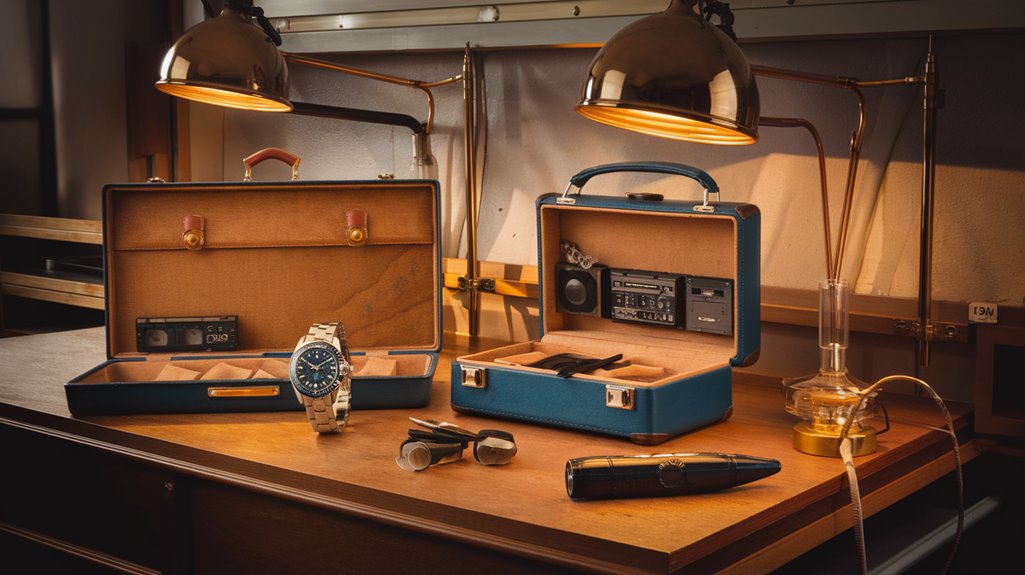
Hollywood's fascination with spy gadgets has remarkably mirrored actual technological developments, creating a fascinating loop where fiction inspires reality and vice versa.
You'll find that iconic Bond gadgets like the Bell Rocket Belt and Wet Nellie submarine car weren't just Hollywood fantasies – they were functioning prototypes that pushed the boundaries of spy technology. The Aston Martin GPS revolutionized how we think about vehicle navigation today.
What's even more intriguing is how yesterday's movie props have become today's everyday tech. The smartphone features showcased in "Tomorrow Never Dies" are now commonplace, while technologies like fingerprint scanners and microchip implants have evolved from science fiction to reality.
This convergence of Hollywood inspiration and real-world innovation continues to shape modern espionage, with films like "Atomic Blonde" and the Bourne franchise drawing praise from actual intelligence operatives for their authentic portrayal of spy tradecraft. Ex-CIA specialists have particularly validated these films' depictions of Cold War espionage techniques through their expert reviews.
The Legacy of Cold War Spy Technology
During the Cold War's tense decades, intelligence agencies on both sides developed an unprecedented array of surveillance tools and gadgets that would shape modern espionage.
From miniature cameras hidden in everyday items to sophisticated aerial reconnaissance platforms, spy technology revolutionized covert operations. The Soviets focused heavily on technology theft rather than innovation. The TELINT systems proved crucial for monitoring Soviet missile capabilities. The legacy of these innovations continues to influence today's surveillance methods.
- The F21 'Ammer' and microdot cameras showed how ordinary objects could conceal powerful surveillance tools.
- U-2 spy planes and Keyhole satellites transformed aerial intelligence gathering forever.
- Ingenious devices like the Lipstick Gun and Bulgarian Umbrella merged deadly effectiveness with innocent appearances.
You'll find traces of Cold War ingenuity in modern surveillance tech, from tiny drone cameras to satellite imaging systems.
The era's breakthroughs in covert technology set the foundation for today's intelligence-gathering methods, proving that necessity truly is the mother of invention.

